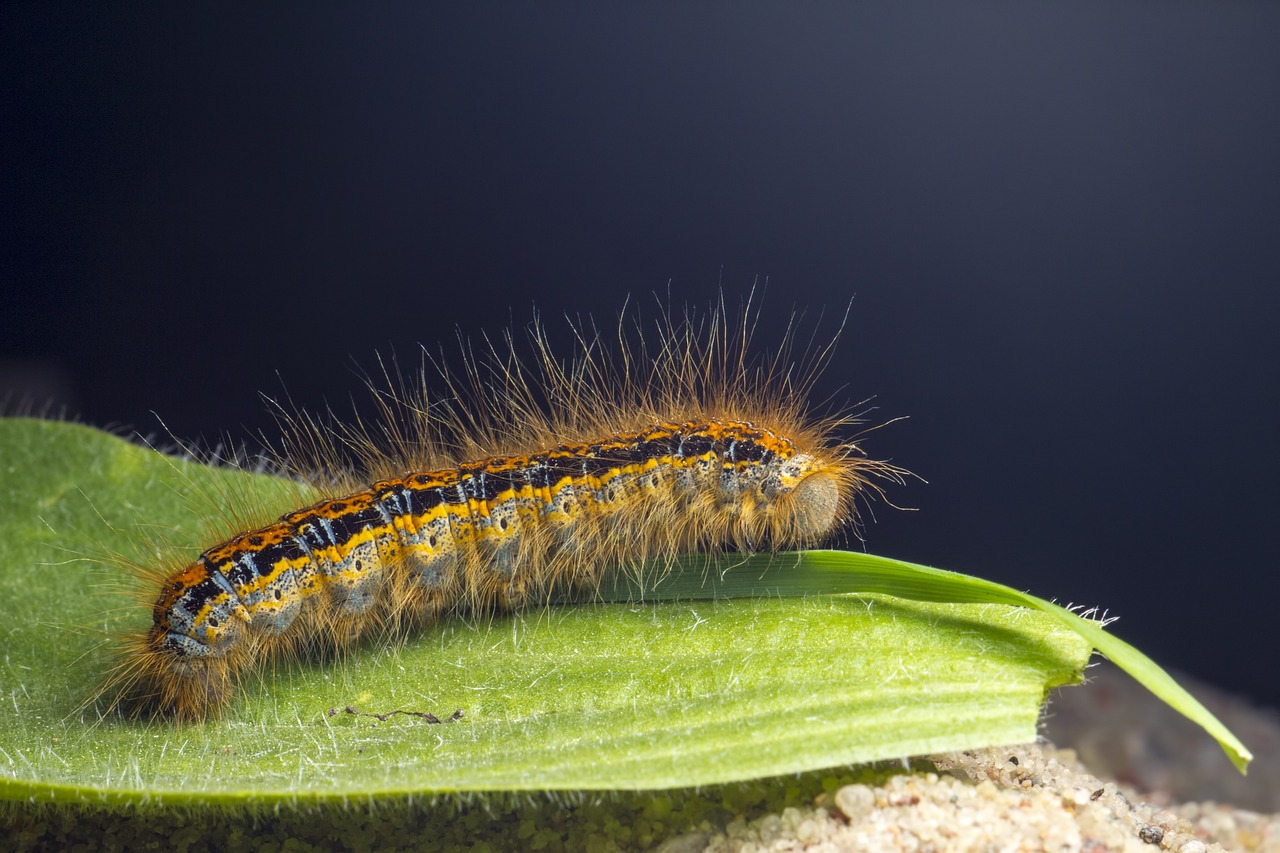The Ground Lackey (Malacosoma castrensis) is a species of moth belonging to the family Lasiocampidae. Known for its striking caterpillar and relatively inconspicuous adult form, it is an interesting species found primarily in Europe and parts of Asia. Here’s an overview of the Ground Lackey:
Appearance
Adult Moth:
- Size: The adult moth has a wingspan of approximately 30 to 45 millimeters.
- Coloration: The forewings are usually light brown to yellowish-brown with faint, darker crosslines. The hindwings are lighter, often a creamy color.
- Sexual Dimorphism: Males and females are similar in appearance, though females tend to be slightly larger and less active.
Caterpillar:
- Size: Fully grown caterpillars can reach about 50 to 60 millimeters in length.
- Coloration: The caterpillars are vividly colored, typically with blue and black longitudinal stripes along their bodies, interspersed with orange and white markings.
- Hair: They are covered with fine hairs that can cause irritation if handled.
Habitat
- Preferred Habitats: The Ground Lackey prefers open, grassy habitats such as marshes, fens, and coastal dunes. It can also be found in heathlands and areas with sparse vegetation.
- Geographic Range: This species is primarily found in Europe, extending from the British Isles to Eastern Europe and parts of Asia.
Life Cycle
- Eggs: Females lay clusters of eggs on grasses and other low vegetation. The eggs overwinter and hatch in the spring.
- Larvae: The caterpillars feed on a variety of herbaceous plants, including grasses, sedges, and reeds. They are gregarious and often form communal webs.
- Pupae: Pupation occurs in a cocoon, often among the grasses or in the soil.
- Adults: Adult moths emerge in late summer, and their flight period generally extends from July to September.
Behavior
- Feeding: The caterpillars are voracious feeders and can sometimes be found in large numbers, which may lead to localized defoliation.
- Activity: Adult moths are nocturnal and are attracted to light. They do not feed and have a short lifespan, mainly focused on reproduction.
- Overwintering: The species overwinters in the egg stage.
Conservation Status
- Population: The Ground Lackey is not currently considered endangered, though its populations can be affected by habitat loss and changes in land use, particularly in coastal areas.
- Conservation Efforts: Preserving wetland habitats and maintaining natural vegetation are key to supporting their populations. Conservation efforts also focus on mitigating the effects of habitat fragmentation.
Identification Tips
- Adults: Look for the light brown to yellowish-brown forewings with faint crosslines. Their relatively plain appearance makes them less conspicuous.
- Caterpillars: The caterpillars are more easily identified due to their distinctive blue, black, orange, and white striped patterns and communal web-building behavior.
Summary
The Ground Lackey (Malacosoma castrensis) is a notable moth species known for its colorful caterpillars and less conspicuous adult form. It thrives in open, grassy habitats, particularly wetlands and coastal areas. While not currently endangered, its populations benefit from conservation efforts aimed at preserving natural habitats and maintaining biodiversity. Recognizing this species involves looking for its distinctive caterpillars and understanding its life cycle and habitat preferences.
Views: 1115
Subscribe to the newsletter:
